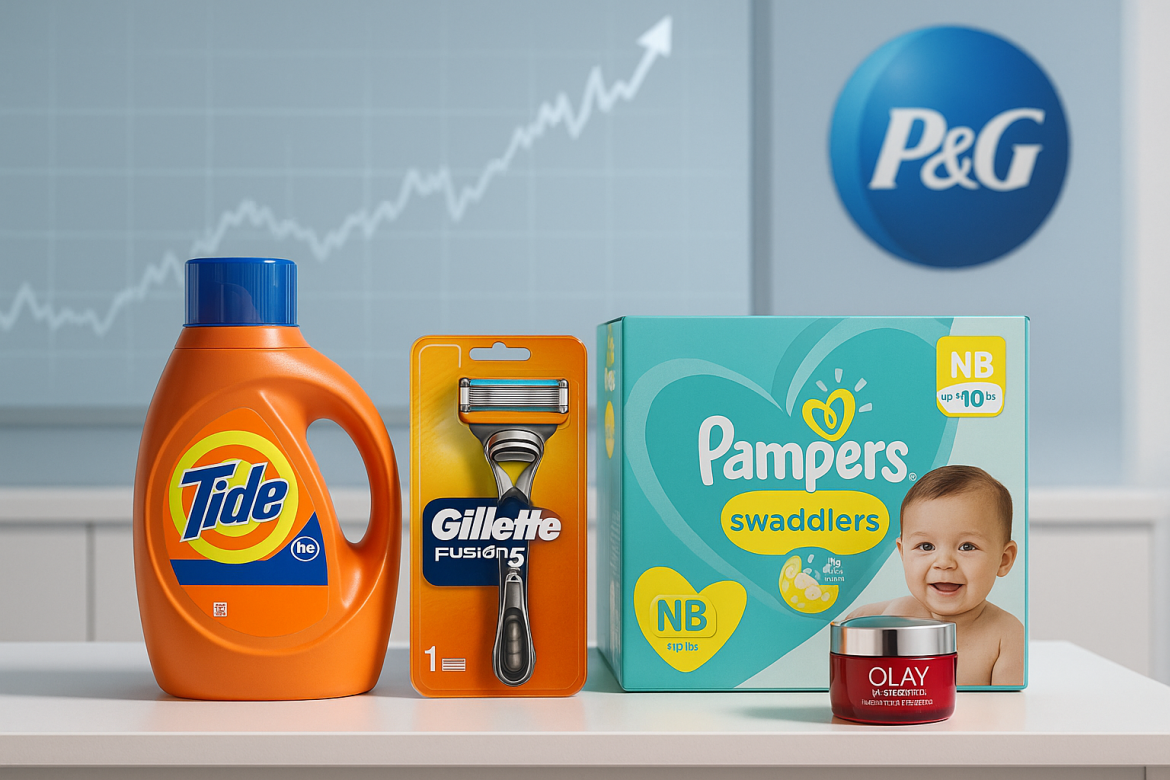Procter & Gamble (NYSE: PG) reported stronger-than-expected fiscal first-quarter earnings and revenue on Friday, driven by higher demand for its beauty and grooming products.
The consumer goods giant managed to outperform Wall Street’s expectations even as it faced increased costs from tariffs and a challenging global environment.
Shares of P&G rose as much as 4% in premarket trading following the report.
The company reiterated its full-year outlook for sales and earnings, reflecting steady confidence in its underlying business despite ongoing economic headwinds.
Earnings and revenue surpass estimates
For the quarter ended September 30, Procter & Gamble reported adjusted earnings per share of $1.99, surpassing analysts’ estimates of $1.90, according to data from LSEG.
Revenue came in at $22.39 billion, ahead of expectations of $22.18 billion and up 3% year over year.
Net income attributable to the company rose to $4.75 billion, or $1.95 per share, compared with $3.96 billion, or $1.61 per share, a year earlier.
Excluding restructuring costs and other items, the consumer products leader earned $1.99 per share.
Organic sales, which exclude the impact of acquisitions, divestitures, and foreign exchange, increased 2% during the quarter.
However, overall volume was flat compared with the prior year, signaling that growth was primarily driven by pricing rather than a rise in unit sales.
Diverging consumer behavior in a ‘K-shaped’ economy
P&G executives acknowledged that while sales were higher, consumer behavior continues to reflect caution amid persistent inflation and uneven income recovery.
Chief Financial Officer Andre Schulten described the current landscape as “not great, but stable,” noting that consumer patterns have been consistent in recent quarters.
In the US, P&G’s largest market, consumption across its product categories has slowed slightly.
The company observed a “K-shaped” trend—where higher-income consumers are buying larger pack sizes from mass and online retailers to maximize value, while lower-income households are stretching existing supplies longer and delaying repeat purchases.
Volume declines were most notable in the health care and fabric and home care divisions—home to brands like Tide and Swiffer—which both saw volumes fall 2%.
The baby, feminine, and family care segment, which includes Pampers and Tampax, reported flat volume.
By contrast, P&G’s beauty division performed well, with volume growth of 4% and sales up 6%, buoyed by strong demand for brands such as Olay and SK-II.
The grooming business, which includes Gillette and Venus, also posted a modest 1% increase in volume and 5% sales growth.
Tariff costs and fiscal 2026 outlook
The company said it now expects $400 million in after-tax costs related to tariffs for fiscal 2026—down from its earlier forecast of $800 million—following the removal of retaliatory tariffs on Canadian goods.
CEO Jon Moeller told CNBC that P&G therefore plans to raise prices less than initially anticipated.
However, new uncertainty has emerged after President Donald Trump announced the termination of trade talks with Canada, which could lead to higher costs for importers like P&G.
Despite these challenges, P&G reaffirmed its fiscal 2026 guidance, projecting sales growth between 1% and 5% and core earnings per share of $6.83 to $7.09.
“These results keep us on track to deliver within our guidance ranges on all key financial metrics for the fiscal year,” Moeller said, emphasizing the company’s resilience in a “challenging consumer and geopolitical environment.”
Shares of Procter & Gamble are down 9.8% year to date, but Friday’s upbeat earnings report provided a lift, underscoring investors’ continued confidence in the company’s steady execution and brand strength.
The post Procter & Gamble shares surge after Q1 results beating expectations appeared first on Invezz

